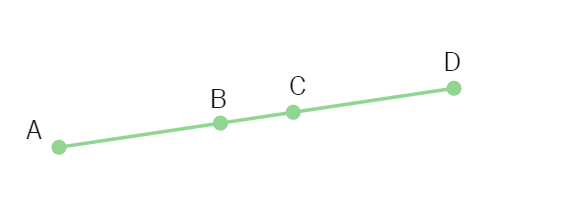Exercise 5.1
Q1
- Which of the following statements are true and which are false? Give reasons for your answers.
(i) Only one line can pass through a single point.
(ii) There are an infinite number of lines which pass through two distinct points.
(iii) A terminated line can be produced indefinitely on both the sides.
(iv) If two circles are equal, then their radii are equal.
(v) In the below figure, if AB = PQ and PQ = XY, then AB = XY.

Sol
Solution:
(i)
There can be
(ii)
Through two distinct points, there can be only
(iii)
A line that is terminated can be indefinitely produced on
(iv)
The radii of two circles are
(v)
According to Euclid’s 1st axiom- “Things which are equal to the same thing are also
Q2
- Give a definition for each of the following terms. Are there other terms that need to be defined first? What are they, and how might you define them?
(i) parallel lines (ii) perpendicular lines (iii) line segment
(iv) radius of a circle (v) square
Sol
Solution:
Yes, there are other terms which need to be defined first. They are as follows:
Plane: Flat surfaces in which geometric figures can be drawn are known as
A plane surface is a surface which lies evenly with straight lines on it.
Point: A
A point is that which has no part.
Line: A collection of points that has only length and
A line is
(i) Parallel lines: Parallel lines are those lines which
Parallel lines can be two (or) more lines.
(ii) Perpendicular lines: Perpendicular lines are those lines which intersect each other in a plane at
(iii) Line segment: When a line cannot be extended any further because of its
(iv) Radius of circle: A radius of a circle is the line from any point on the
(v) Square: A quadrilateral in which all the four sides are said to be
Q3
- Consider two ‘postulates’ given below:
(i) Given any two distinct points A and B, there exists a third point C which is in between A and B.
(ii) There exist at least three points that are not on the same line.
Do these postulates contain any undefined terms? Are these postulates consistent?
Do they follow from Euclid’s postulates? Explain.
Sol
Solution:
Undefined terms in the postulates are as follows:
(a) There are many points that lie in a plane. But, in the postulates given here, the position of the point C is
(b) On top of that, there is
Thus, these postulates are consistent when we deal with these two situations:
Point C is lying on the line segment AB in between A and B.
Point C does not lie on the line segment AB.
So, they
Q4
- If a point C lies between two points A and B such that AC = BC, then prove that AC =
1 2

Sol
Solution:
Given: AC = BC
Adding AC both sides: AC + AC = BC + AC
We know that, BC + AC =
∴ 2 AC = AB (If equals are added to equals, the wholes are
⇒ AC =
Hence, proved.
Q5
- In Question 4, point C is called a mid-point of line segment AB. Prove that every line segment has one and only one mid-point.

Sol
Solution:
Let AB be the line segment. Assume that points P and Q are the two different mid points of AB. Therefore,
AP =
Also, PB + AP =
Similarly, QB + AQ =
Adding AP to the LHS and RHS of the equation: AP = PB
We get: AP + AP = PB + AP (If equals are added to equals, the wholes are equal.)
⇒
Similarly,
From (i) and (ii), since RHS are same, we equate the LHS.
2 AP = 2 AQ (Things which are
⇒ AP =
Thus, we conclude that P and Q are
This contradicts our assumption that P and Q are two different mid points of AB.
Thus, it is proved that every line segment has one and only one mid-point.
Q6
- In the below figure, if AC = BD, then prove that AB = CD.

Sol
Solution:
Given: AC = BD
From the given figure, we get:
AC = AB + BC
BD = BC + CD
⇒ AB + BC = BC + CD as AC =
We know that, according to Euclid’s axiom, when equals are subtracted from equals, remainders are
Subtracting BC from the LHS and RHS of the equation AB + BC = BC + CD, we get:
Thus, AB =
Hence, proved.
Q7
- Why is Axiom 5, in the list of Euclid’s axioms, considered a ‘universal truth’? (Note that the question is not about the fifth postulate.)
Sol
Solution:
Axiom 5: The whole is always
For Example: A cake. When it is whole or complete, assume that it measures 2 pounds but when a part from it is taken out and measured, its weight will be smaller than the previous measurement. So, the fifth axiom of Euclid is true for
Hence, Axiom 5, in the list of Euclid’s axioms, is considered a ‘universal truth’.
